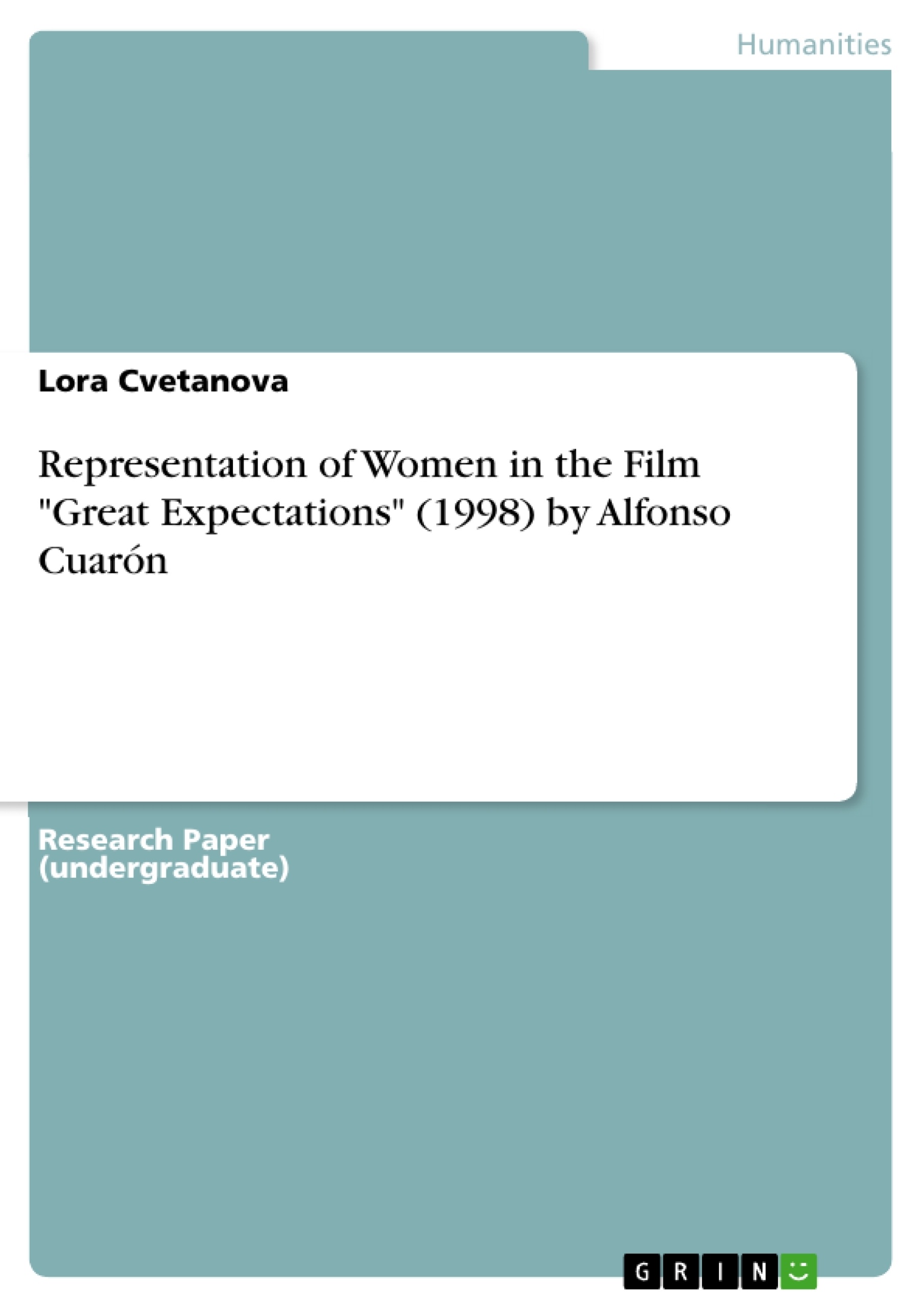Laura Mulvey states in her work ‘Visual Pleasure and Narrative Cinema’ that ‘ in a world ordered by sexual imbalance, pleasure in looking has been split between active/male and passive/ female.’ She implies that women are displayed as sexual objects for the men’s gaze and she calls this concept to-be-looked-at-ness. From the above several shots we may consider that to be –look –at –ness concept is at present. Estella displays herself for Finn’s gaze but she is not passive. She enjoys her power over him and uses her sexuality to hold his look and disturb him. He has become like a toy for her.
On the other hand, Annette Kuhl suggests in chapter one of her work under the name ‘The Power of Image: Essays on Representation and Sexuality’ that ‘It is now a commonplace that the transformation of the unclothed woman from being naked to being nude(one of the major ‘achievennts’ of the european high traditions) also bring about,in all forms of representations , the transformatin of women into objects , the site of stuctures both of exchange and of looking. The spectator is the buyer, the buyer is the spectator. To posses a woman’s sexuality is, however mass-produced the image, also in the same way to posses, to maintain a degree of control over, woman in general’ . Even though at first sight we tend to underestimate Finn and to think of him as a victim of the cold Estella, we realize that he, by drawing her naked, transforms her into an object of men’s gaze as the above citation suggests. Thus, he maintains certain control over her. By exposing her paintings later in the film, in a galary, he in a way confirms to the public he posses her.
Merrie Johnson argues that narrative cinema produces a "masculinization" of the female spectator who ‘may find herself secretly, unconsciously almost, over the diegetic world that identification with a hero provides, gains access to repressed material’ Many of us may have fantasized that they were great doers of deeds and the slayers of dragons, for example, all kinds of gendered roles as Supermen, but here, in Great Expectations one definitely wouldn’t want to be in Finn’s position. Just as in the first sequence under study Estella leaves him once her portraits are finished and he is once again lured into a trap of seduction and left alone . He only looks after her while she leaves the room.
Table of Contents
- Introduction
- Summary of the film
- Sequence analysis
- Sequence One
- Sequence Two
- Conclusion form Sequence One and Sequence Two
- Esthetics of the film
- A close up on Estella
- Conclusion
Objectives and Key Themes
This paper analyzes the film adaptation of Charles Dickens' Great Expectations by Alfonso Cuarón, focusing on the representation of women in the film, particularly the character of Estella. The paper explores the film's narrative structure, aesthetic choices, and thematic elements, examining how they contribute to the portrayal of female characters.
- Representation of Women in the film adaptation of Great Expectations
- The relationship between Estella and Finn, and its impact on their character development
- The film's use of visual elements, such as lighting and framing, to emphasize the contrast between Estella and Finn's personalities
- The influence of Ms. Dinsmoor, the eccentric millionairess, on Estella's upbringing and personality
- The theme of love and its complexities as explored in the film's narrative
Chapter Summaries
The introduction provides an overview of the film, its context, and the specific aspects that will be analyzed. It highlights the director's choices, such as the relocation of the setting from Victorian England to a neo-Gothic mansion in Florida, and the film's departure from the original novel's comedic elements. The introduction also outlines the structure of the paper, which includes a summary of the film, a detailed analysis of two key sequences, a discussion of the film's aesthetics, and a close examination of Estella's relationship with Finn.
The chapter titled "Summary of the film" provides a concise overview of the narrative, focusing on the main plot points, character introductions, and key events. It highlights the film's adaptation of the novel and its focus on the romantic aspect of the story. The chapter also introduces the key characters, including Finn, Estella, and Ms. Dinsmoor.
The "Sequence analysis" section delves into the two chosen sequences, focusing on their significance in understanding the characters' motivations, relationships, and the film's overall themes. The analysis employs techniques such as camera work, lighting, and dialogue to uncover the nuances of each scene and its contribution to the film's narrative. The chapter concludes with a discussion of the connections between the two sequences and their implications for the overall narrative.
The "Esthetics of the film" chapter discusses the film's visual style, including lighting, composition, and color, examining how they contribute to the film's overall aesthetic and thematic impact. It analyzes how the film's visual elements help to create a specific mood and enhance the emotional impact of the narrative.
The final chapter "A close up on Estella" focuses on the character of Estella and her relationship with Finn. It explores her complex personality, her influence on Finn's life, and the film's portrayal of her as a character who is both beautiful and emotionally detached. It analyzes the interplay between Estella and Finn's personalities, highlighting their shared experiences and the impact they have on each other's lives.
Keywords
The main keywords and focus topics of the text include representation of women, film adaptation, Great Expectations, Alfonso Cuarón, Estella, Finn, character analysis, visual elements, lighting, composition, color, thematic analysis, love, relationships, and the film's adaptation of the original novel.
- Quote paper
- Lora Cvetanova (Author), 2014, Representation of Women in the Film "Great Expectations" (1998) by Alfonso Cuarón, Munich, GRIN Verlag, https://www.grin.com/document/278593



